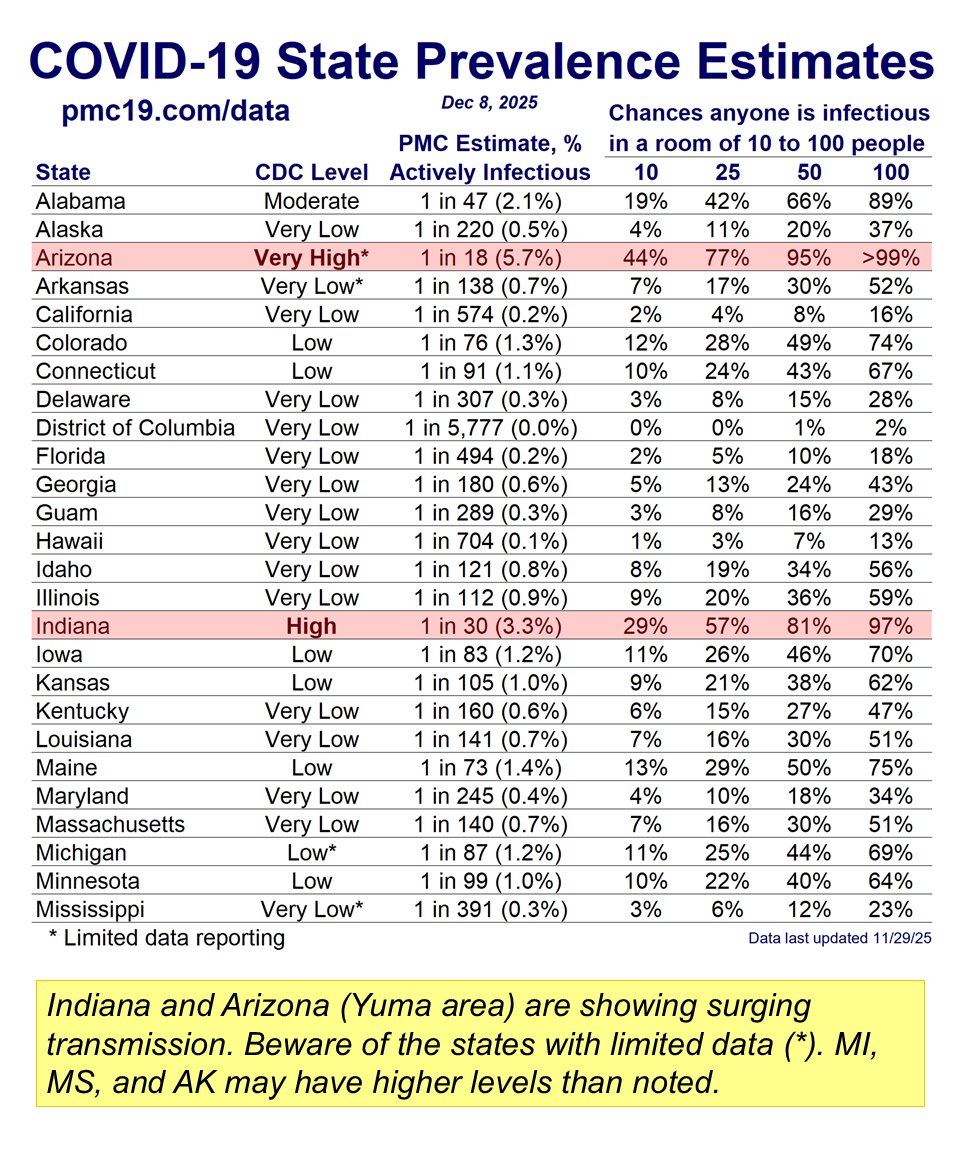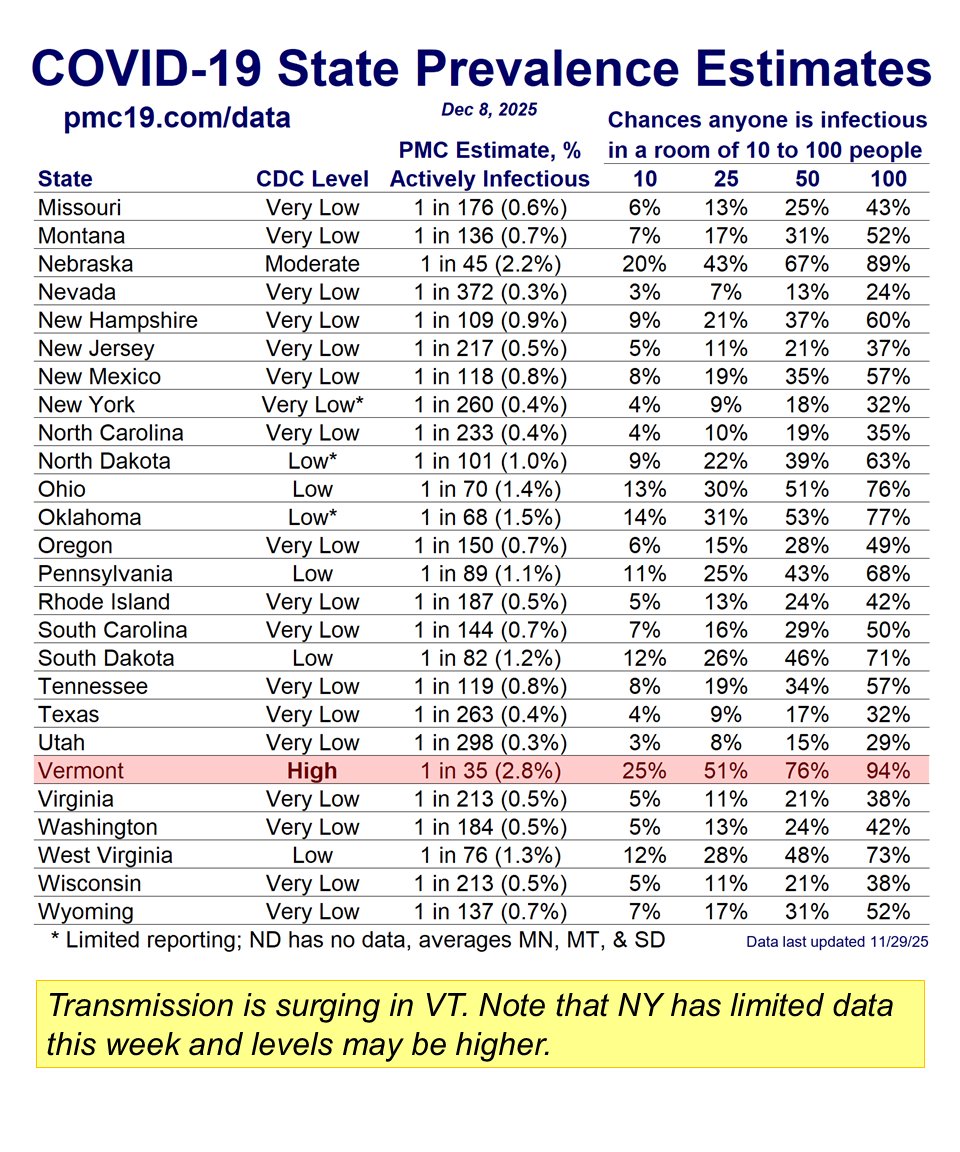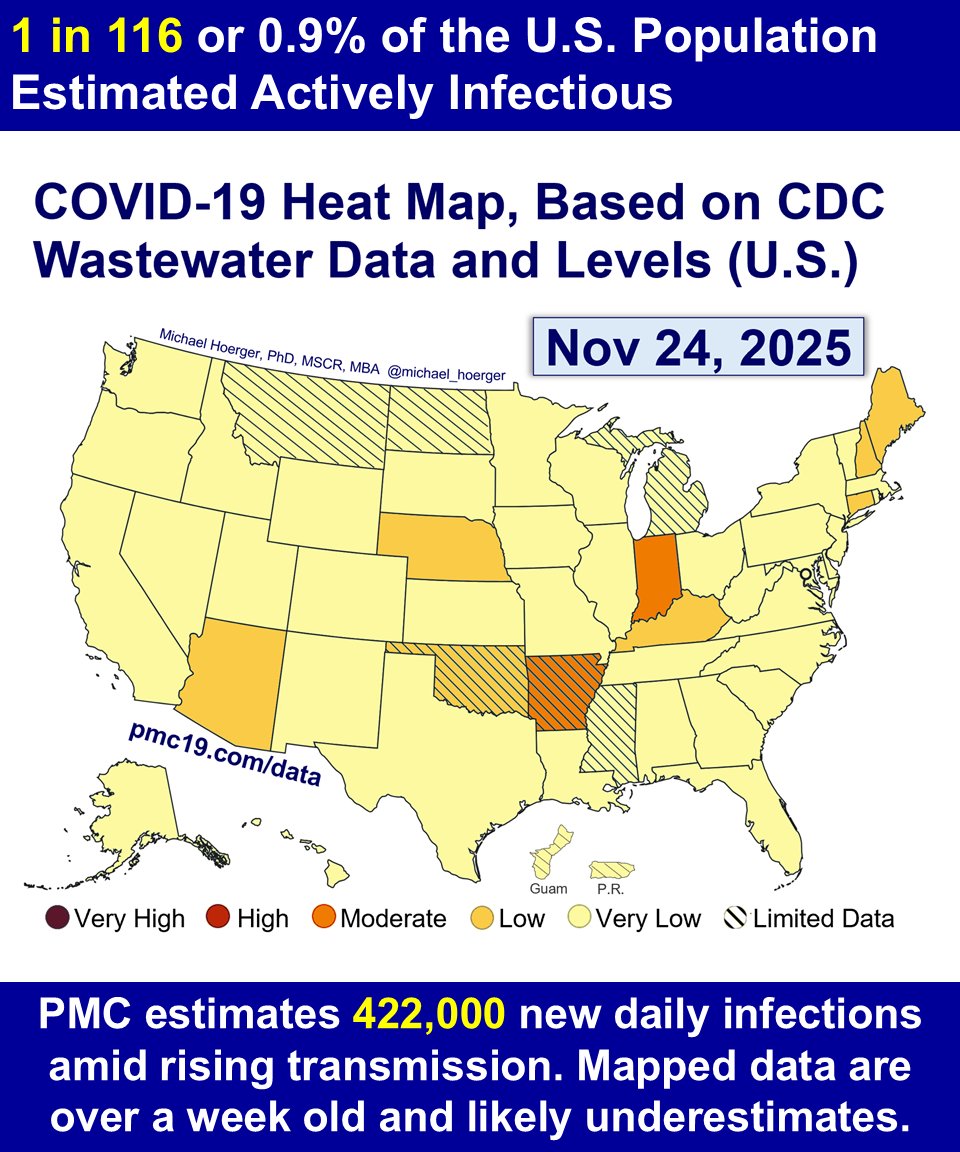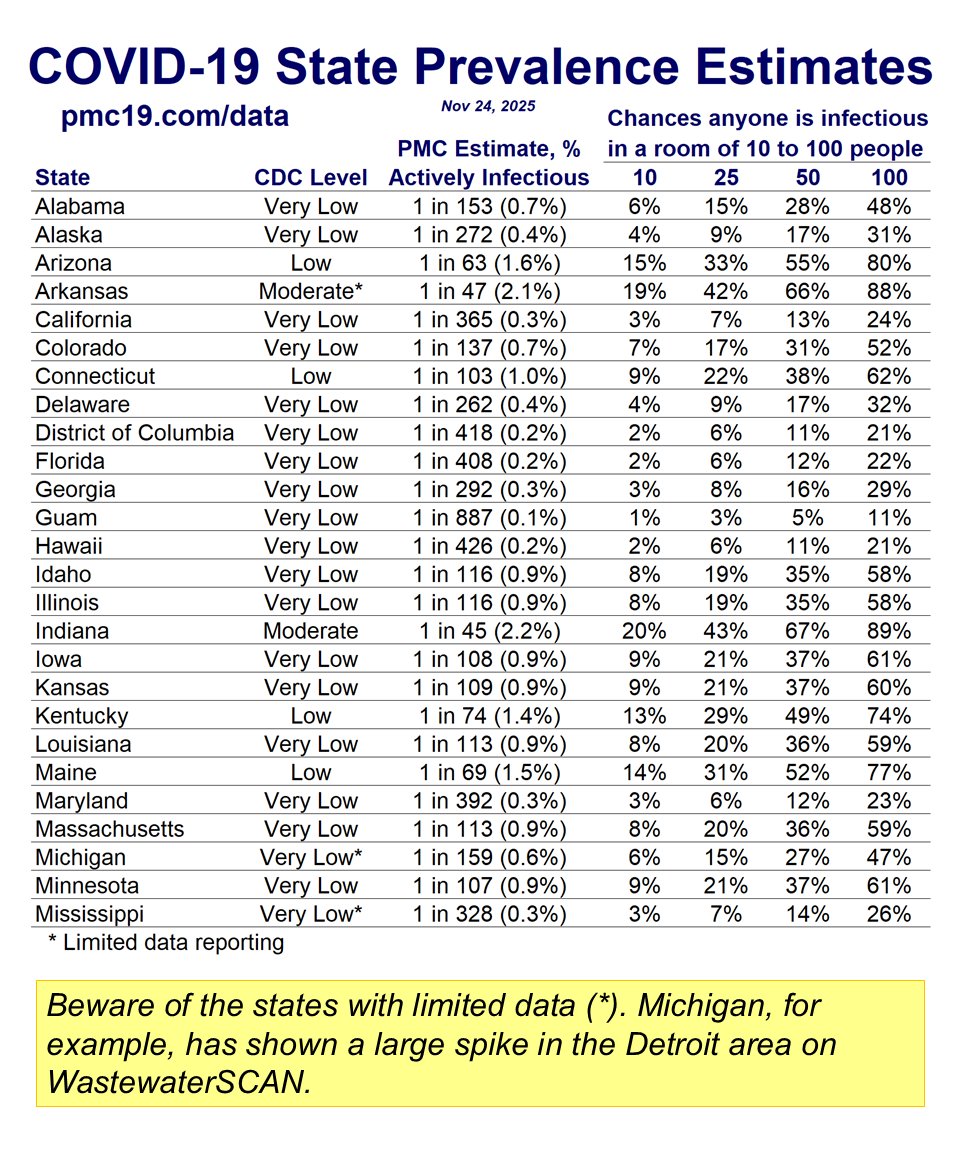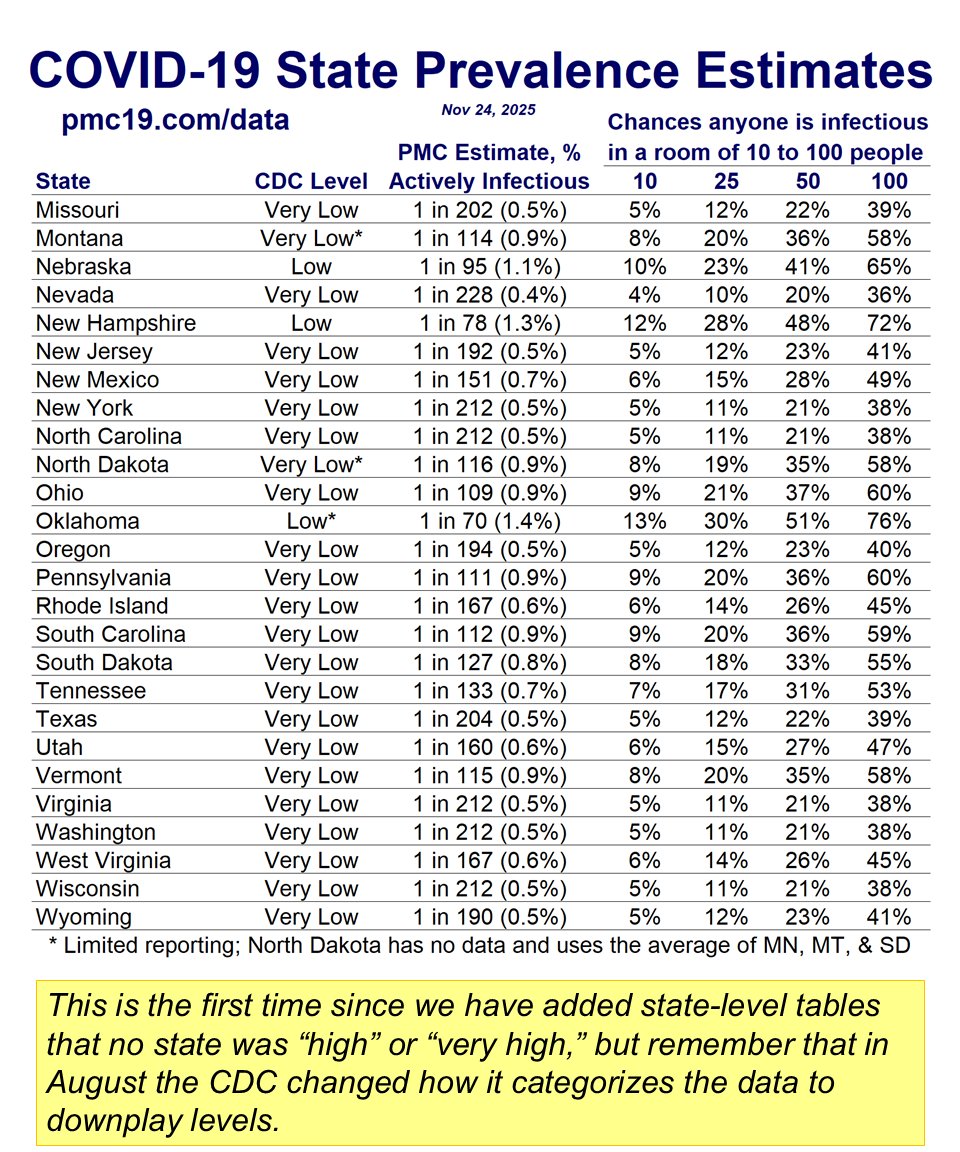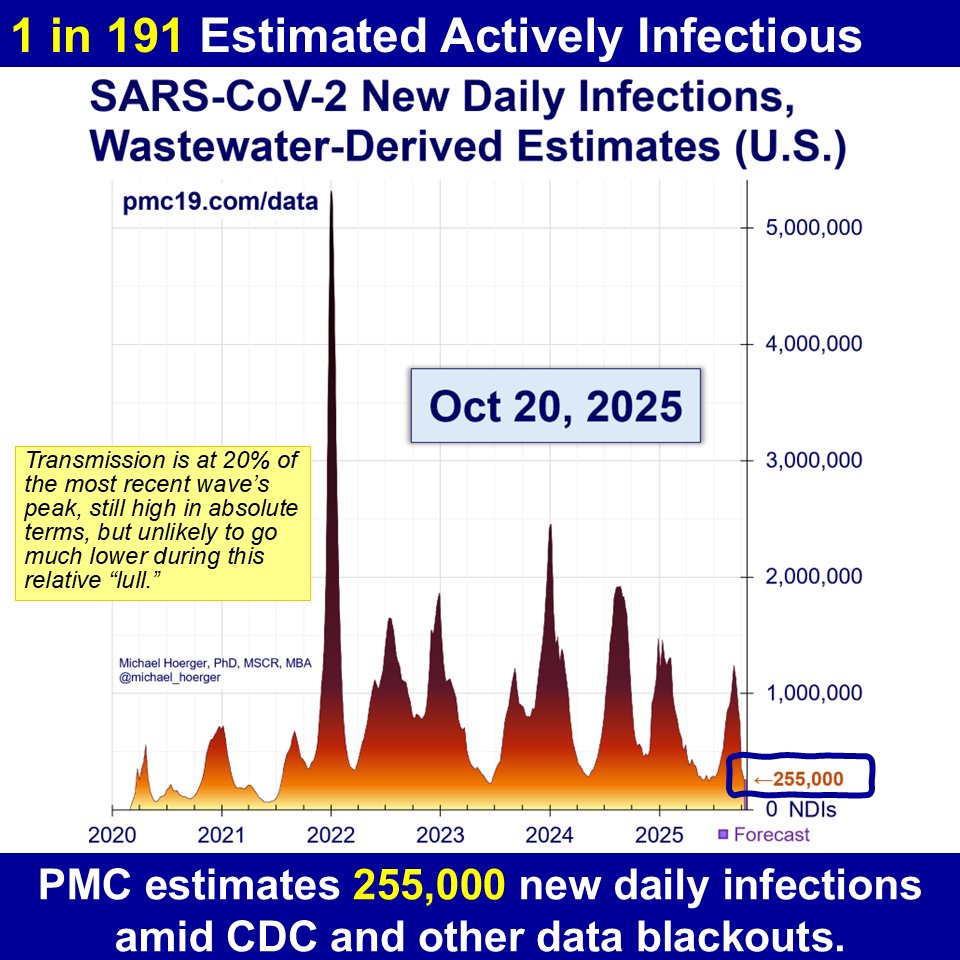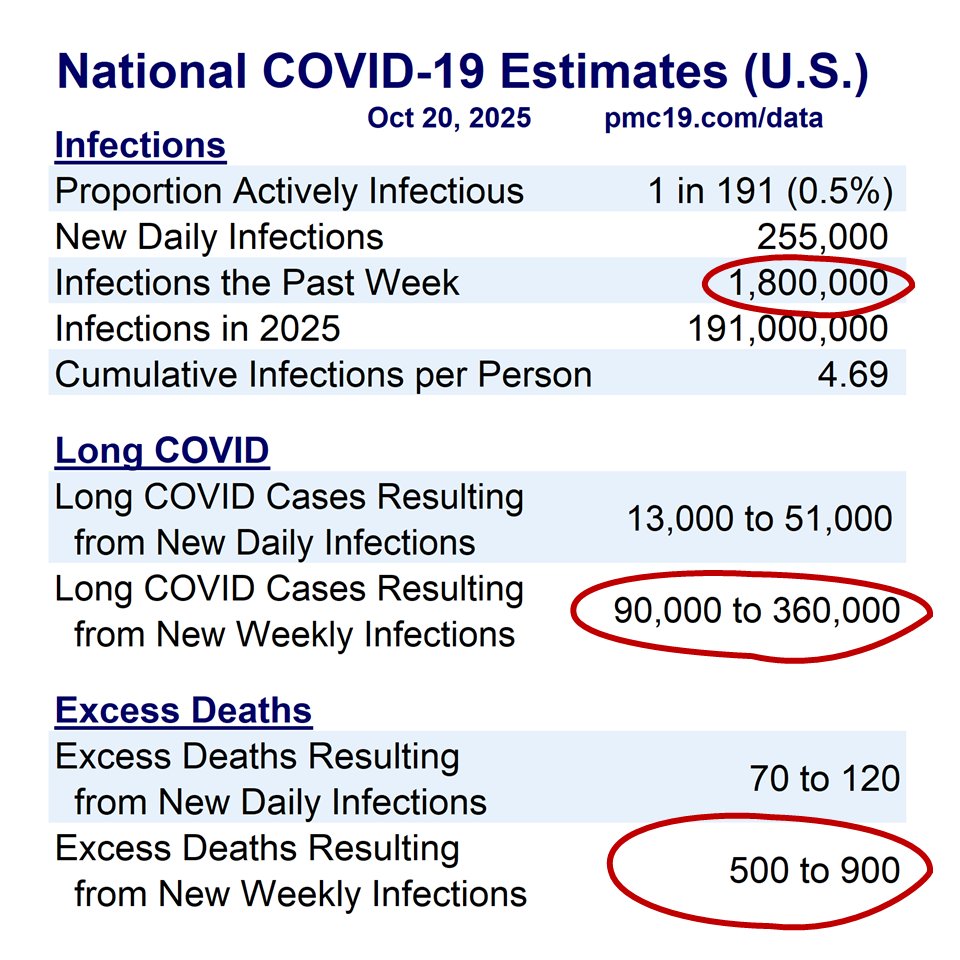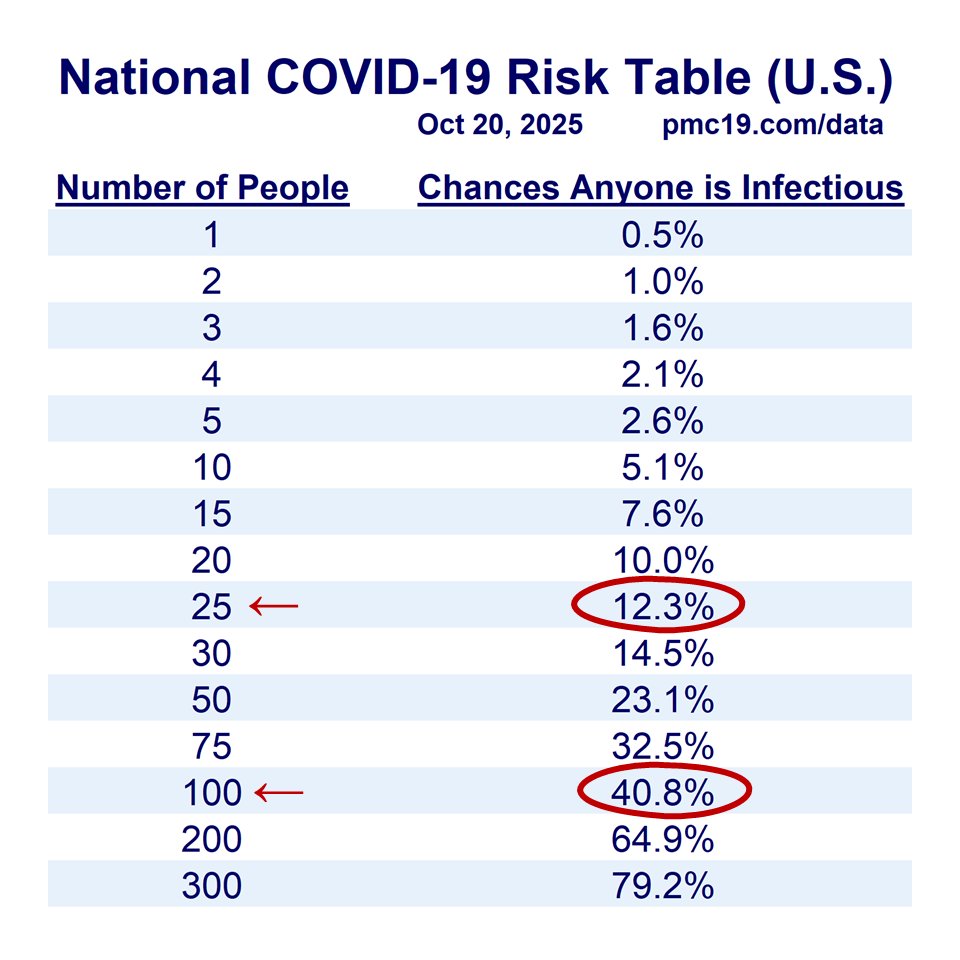PMC COVID-19 Tracker, Nov 20, 2023
We're headed into a winter surge!
Today:
🔹762,000 daily cases
🔹1 in 63 infectious (1.6%)
In 4 weeks:
🔹1,265,000 daily cases
🔹1 in 38 infectious (2.7%)
1/

We're headed into a winter surge!
Today:
🔹762,000 daily cases
🔹1 in 63 infectious (1.6%)
In 4 weeks:
🔹1,265,000 daily cases
🔹1 in 38 infectious (2.7%)
1/

Zooming out to the full pandemic, we're clearly in the 8th U.S. COVID wave, which I would characterize as a #surge.
🌊🌊🌊🌊🌊🌊🌊🌊
There's already more virus circulating today than during 60% of the days of the pandemic.
2/
🌊🌊🌊🌊🌊🌊🌊🌊
There's already more virus circulating today than during 60% of the days of the pandemic.
2/

BNO & popular news outlets focus on *reported* cases. Actual cases derived from the true levels of virus in wastewater indicate 25x more infections.
By undercounting, they are grossly underestimating the number of resulting #LongCOVID cases.
3/

By undercounting, they are grossly underestimating the number of resulting #LongCOVID cases.
3/
https://twitter.com/BNOFeed/status/1726428572154225146

Contact reduction (spending time in-person with fewer people) is an extremely smart method of avoiding infection. You'll see this in the next two tables. One focuses on schools/meetings. The other is more generic. Let's see which one gets shared more.
4/
4/
This table shows how the risk of interacting with someone with COVID increases as the size of a classroom or meeting increases, as of Nov 20.
With 10 people, there's a 15% chance someone has COVID. With 50 people, there's a 55% chance someone has COVID.
5/
With 10 people, there's a 15% chance someone has COVID. With 50 people, there's a 55% chance someone has COVID.
5/

This table has the same data but a more generic title. It should help people think about the typical number of people they interact with in a day.
In interacting with 10 people, there's a 15% chance someone has COVID. 50 people = 55% chance. Plane, restaurant, or theater with 100 people = 80% chance someone there has COVID.
Again, same table as Tweet #5, just framed with a different title.
6/

In interacting with 10 people, there's a 15% chance someone has COVID. 50 people = 55% chance. Plane, restaurant, or theater with 100 people = 80% chance someone there has COVID.
Again, same table as Tweet #5, just framed with a different title.
6/

Many families will gather for Thanksgiving in 3 days (Nov 23). Here's how COVID risk increases with the number of social interactions.
In a family gathering of 5, there's an 8% chance someone has COVID. A big gathering of 10 = 16% chance. Two family dinners each with 10 people (approx 20 people total) = 29% chance someone has COVID. Packed restaurant of 100 = 82% chance someone has COVID. Flight of 200 = 97% chance someone has COVID.
7/

In a family gathering of 5, there's an 8% chance someone has COVID. A big gathering of 10 = 16% chance. Two family dinners each with 10 people (approx 20 people total) = 29% chance someone has COVID. Packed restaurant of 100 = 82% chance someone has COVID. Flight of 200 = 97% chance someone has COVID.
7/

Many families will gather for Christmas and other celebrations next month. Here's how COVID risk increases with the number of social interactions.
In a family gathering of 5, there's an 15% chance someone has COVID. A big gathering of 10 = 27% chance. Two family dinners each with 10 people (approx 20 people total) = 47% chance someone has COVID. Packed restaurant of 100 = 96% chance someone has COVID. Flight of 200 = 99.8% chance someone has COVID.
These numbers are speculative at 1-month out. The model will refine estimates as we get closer and closer. Stay tuned.
8/

In a family gathering of 5, there's an 15% chance someone has COVID. A big gathering of 10 = 27% chance. Two family dinners each with 10 people (approx 20 people total) = 47% chance someone has COVID. Packed restaurant of 100 = 96% chance someone has COVID. Flight of 200 = 99.8% chance someone has COVID.
These numbers are speculative at 1-month out. The model will refine estimates as we get closer and closer. Stay tuned.
8/

Here's the full PMC Dashboard for Nov 20.
You can read the full report here:
Thanks everybody for sharing across platforms and your feedback on things like axis labels, making the percentages meaningful, etc. Much appreciated. The "C" in PMC is for collaborative.
9/pmc19.com/data/

You can read the full report here:
Thanks everybody for sharing across platforms and your feedback on things like axis labels, making the percentages meaningful, etc. Much appreciated. The "C" in PMC is for collaborative.
9/pmc19.com/data/

• • •
Missing some Tweet in this thread? You can try to
force a refresh



